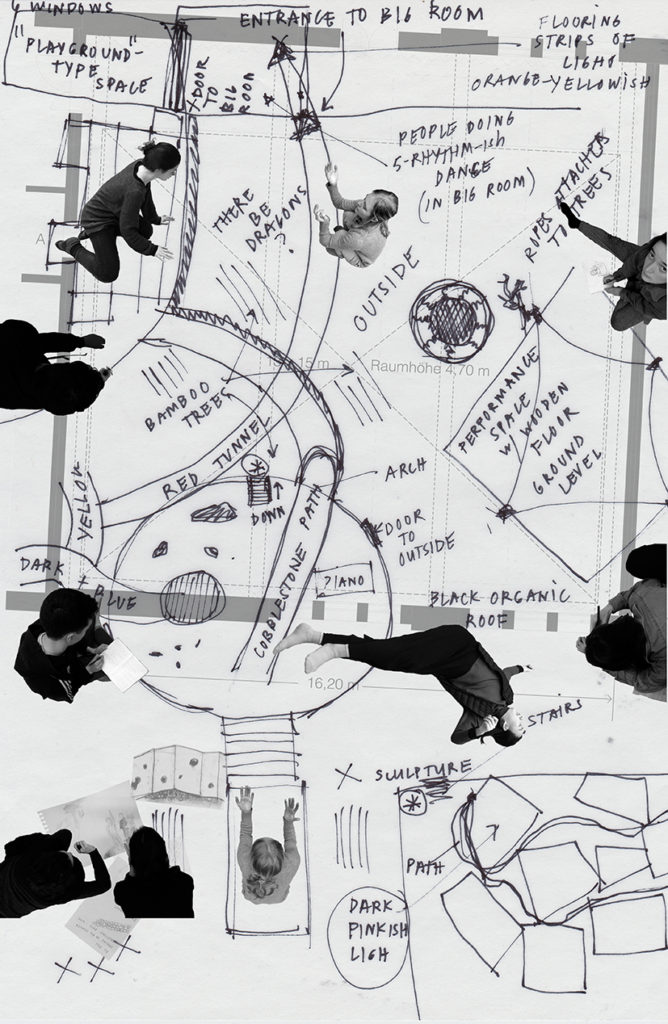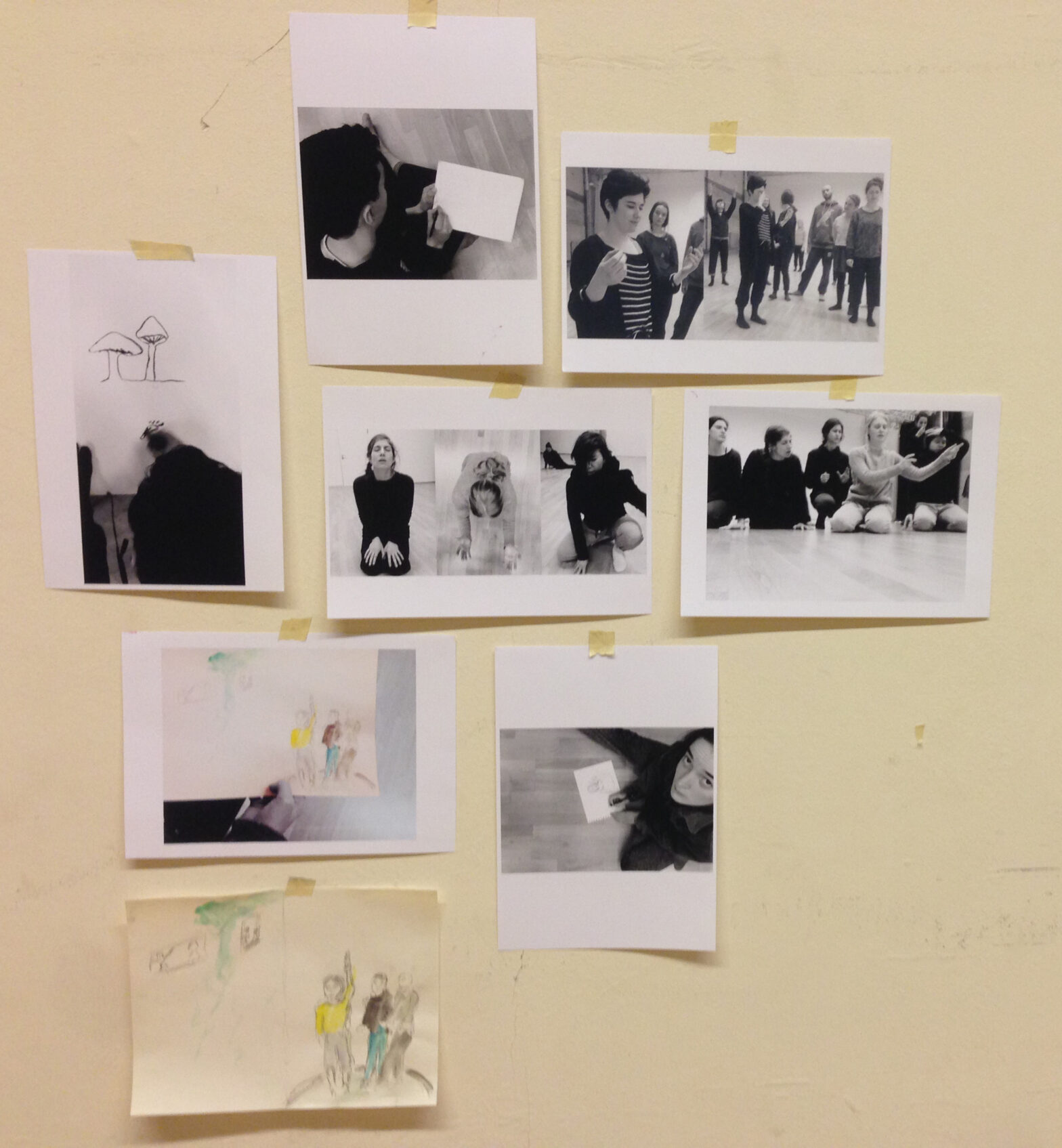Skip to content
For decades, the Berlin dance scene has been venting the need for other spaces for contemporary dance, based on the assumption that dance’s specific qualities ask for a particular kind of spatiality. This text is based on a workshop which took place in February 2018 at Tanzfabrik Berlin, directed at students enrolled in the Dance Intensive Program. The workshop was an attempt to gain access to the above mentioned need by creating a playground, however speculative, for common imaginaries.
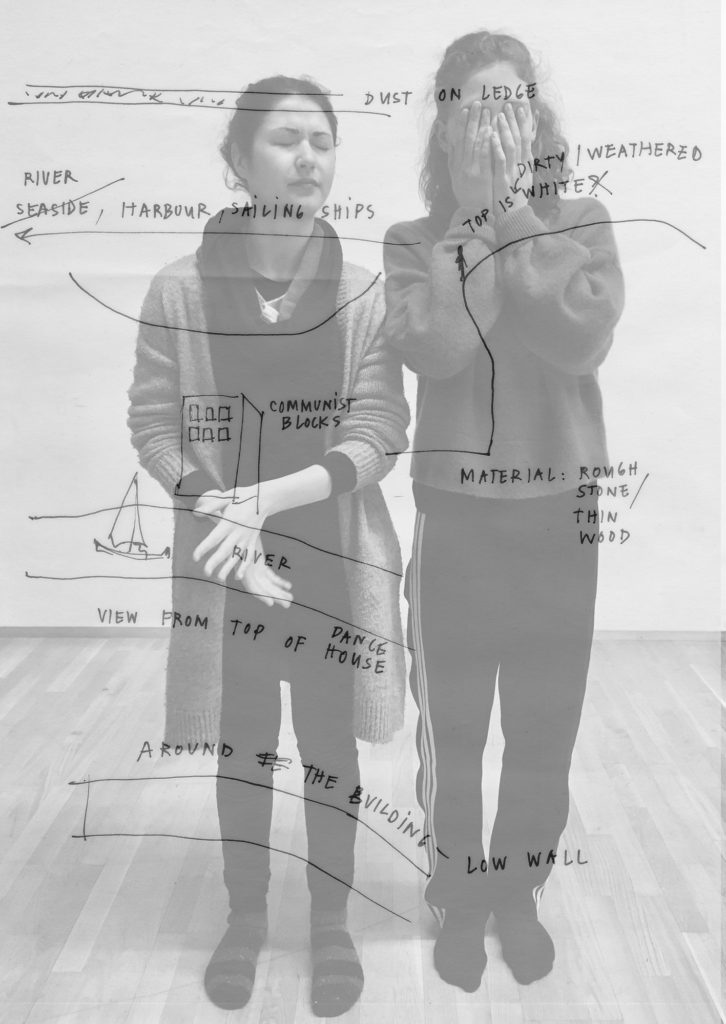
You are in a dance studio. Close your eyes. Imagine a door in front of you. Put your hand on the doorknob and open the door. Now take a literal step into that space unfolding be-fore you and walk around. Describe what you see and keep your eyes closed. Let the images come to you without trying to fulfill your expectations. Don’t force the image, don’t prescribe a story. Just take your time, look around, keep exploring the space and keep describing what you see. Suspend your judgement. Don’t police your vision. You are creating a dreamscape after all. Look at the things you encounter, for the forces of creation are being summoned without you having any previous knowledge about them. Let the visual mind, that old muscle, bend the way it wants to and let it steer you.
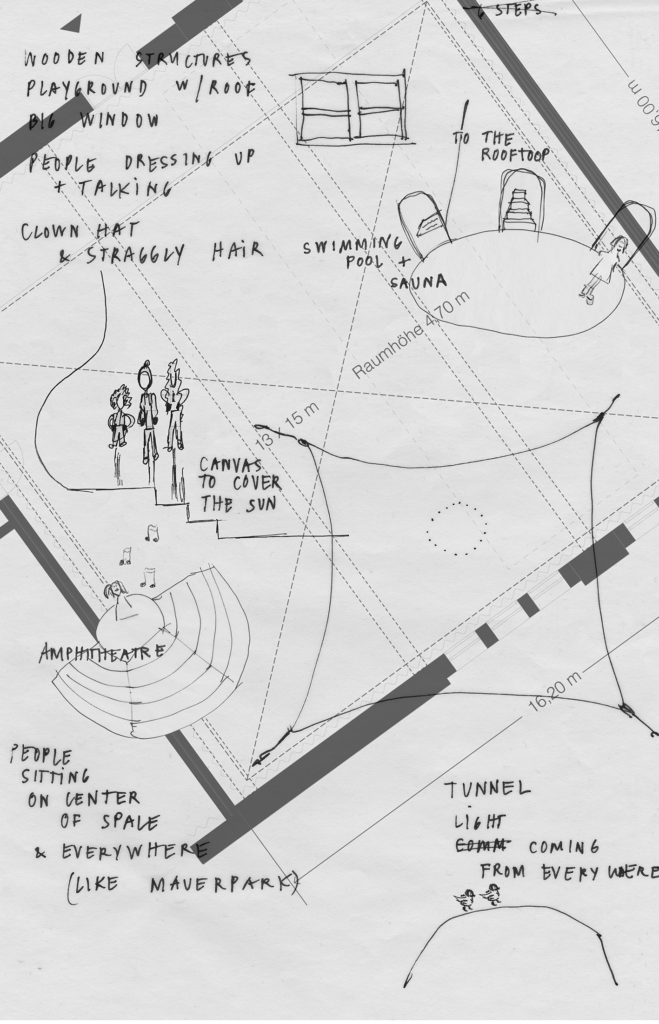
It’s potent. Seeing no longer depends on the apparatus of your eyes. You don’t need light to hit your retina to be able to see. You see with your brain, your whole body and, even more so, with your readiness to imagine. Things show themselves, they are already here, unforced. As if they have been waiting to knock on imagination’s door.
Relax your eyeballs, there is no pressure to create, to be creative. What do firs or birches have to do with a piece of architecture one might ask? Why would a net that is spread out over a hill appear as you imagine a house for dance? This is the wrong question. The work of imagination welcomes images into the process which even you would not have thought of.
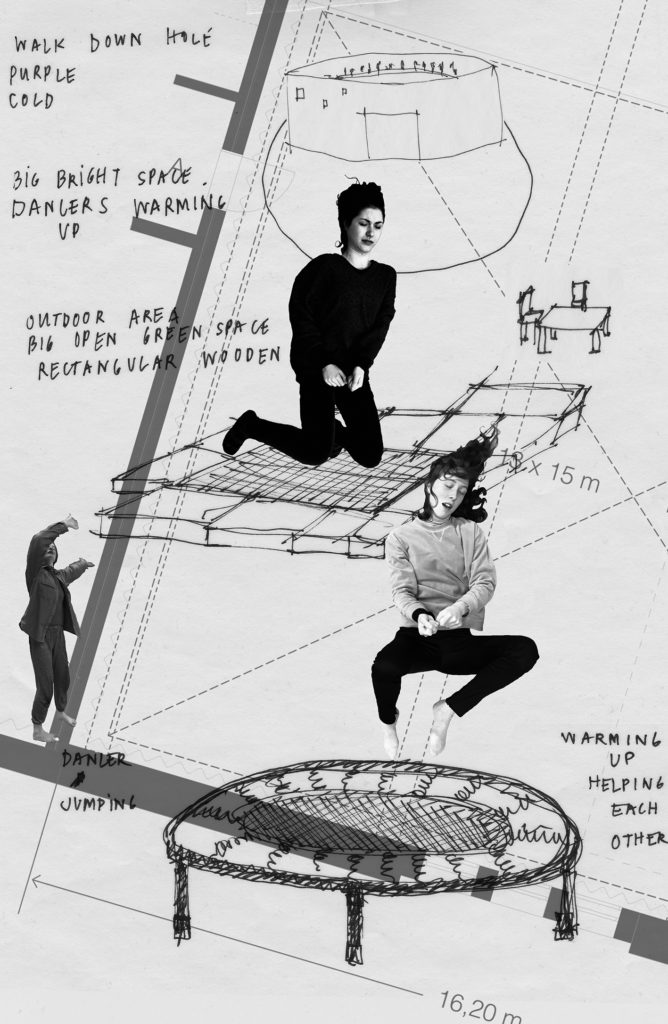
Things don’t need to function this or that way or have to make sense. Simply embrace their dysfunctionalities if they appear to be broken or useless or have a ridiculous shape or bear an unfitting colour. You have become something like an archaeologist, digging, as if these objects, that environment have always already been here. Yet again, by enuncia-ting what you see you might feel like a reporter of your own experience since you are the one putting it on record. But you might also feel like an epicist creating a poetics of space, the grammar for which you compose on the go.
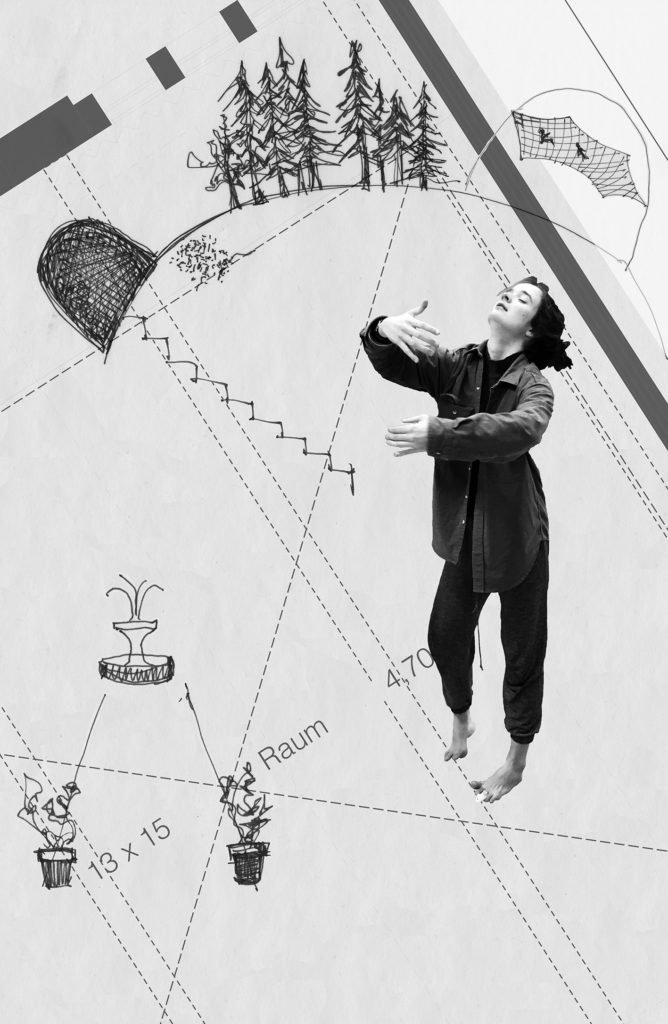
We, the witnesses, surround you with eyes and ears wide open. We closely observe what you do, listen to what you say, protect you in case you are about to walk into a wall. We ask you questions as to what you behold, what you feel, what you make of the space you are in. Sometimes we might ask you to move closer to a corner of the imagined space or to look out of an imagined window or to look into a mirror we generate out of the blue. Sometimes we might ask you to manipulate an object in front of you, to lift it up and observe it closely, to walk around it, or to look underneath it. You remember this feeling from the beginning when you put your hand on the imagined doorknob: you know that the object is physically absent, yet the force of your imagination makes it palpable – you can actually feel it in your hand.
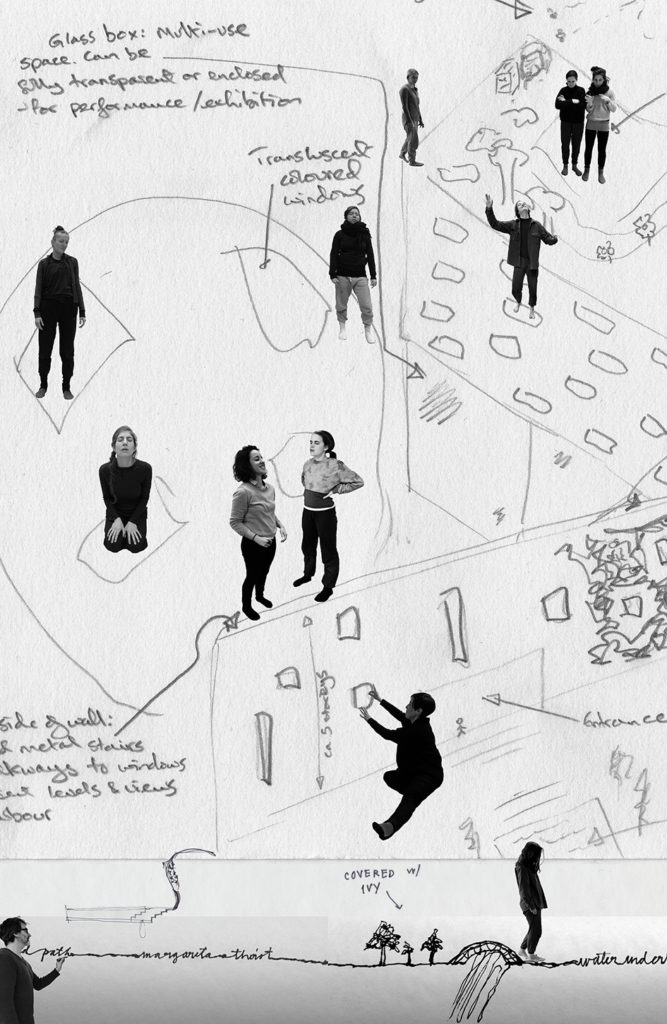
If you are joined by fellow explorers, mind you are in the same space together. When one from your group encounters an object, allow this item to become part of that virtual space you share. Even though your sense of its whereabouts might be vague, there is nothing to worry or squabble about. It’s the shared uncertainty which keeps that space fluid and vibrant.
With our eyes focused on your moving body, some of us sketch pictures, rendering your words visible onto paper. Likewise, our drawings are vague. We can only approximate these shapes and things and objects, and can only rely on the haziness of your descriptions when we attempt to locate them on our drawing pads. Our drawings are far from being an architectural blueprint. Architectural blueprints are precise instructions from a bird’s-eye perspective to produce spaces. They follow the logic of prior knowledge, they give unambiguous orders on how to build.
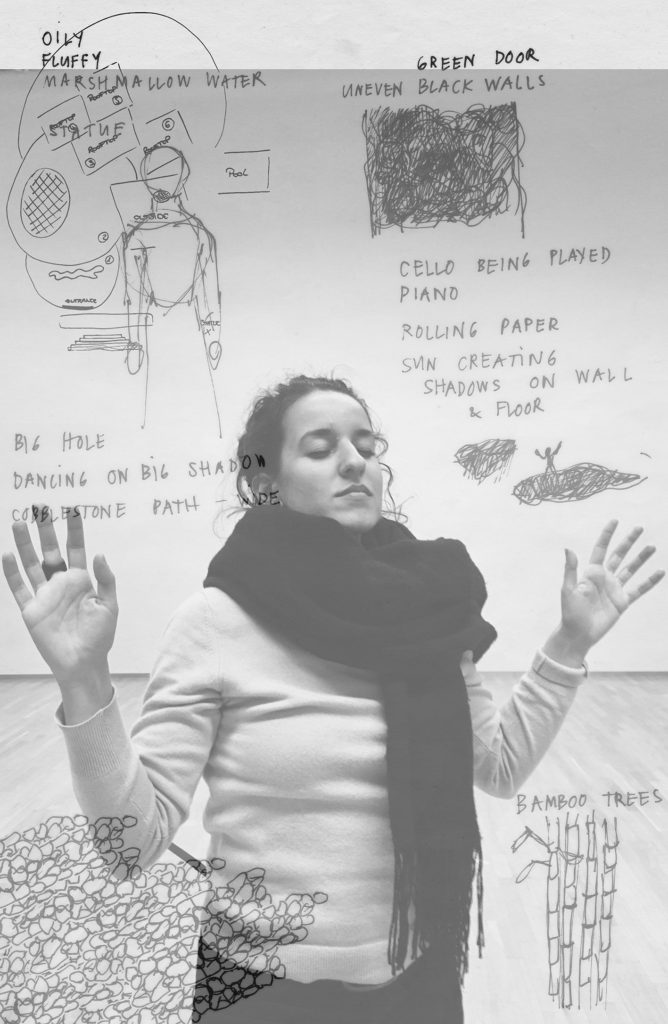
Our drawings, in contrast, are speculative as we fill the gaps and blind spots of your descriptions, following the traces you leave behind, pursuing the markers you induce in our imagination. We supplement your imaginary, and while we are at it, we understand that we are in this together. We understand that your gestures, your movements, your words bind us together in that specific social moment we co-create right here, right now. And all at once we realize that our shared space is more concrete than concrete and bricks and walls could ever become.
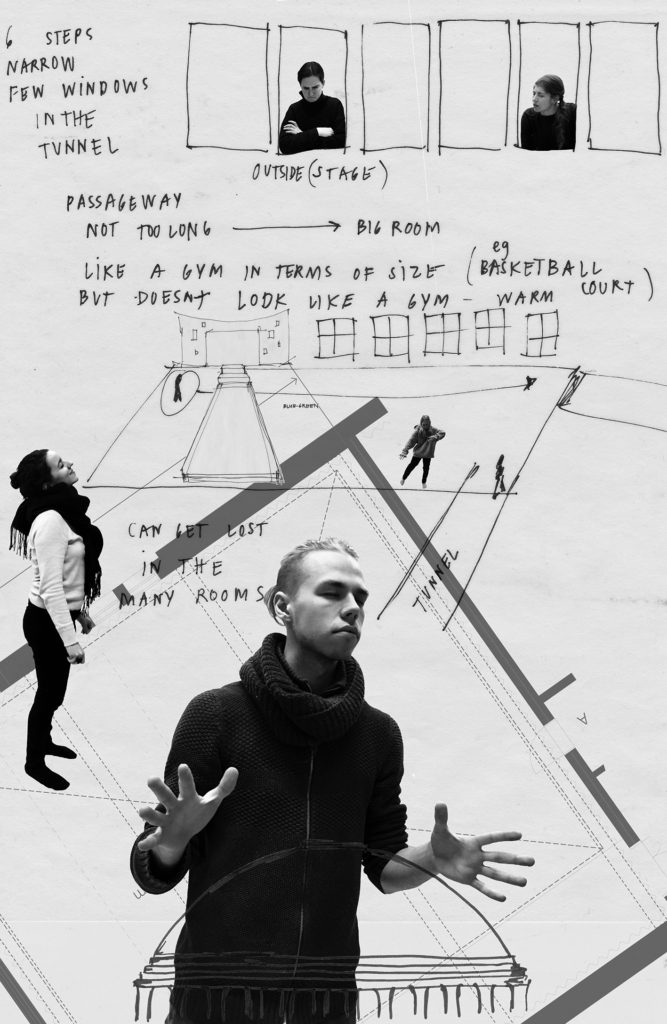
Finally, you feel that you have seen enough, that you have exhausted your senses. With your eyes still closed, find your way back to the door, walk through it – and open your eyes again. We have come a long way.
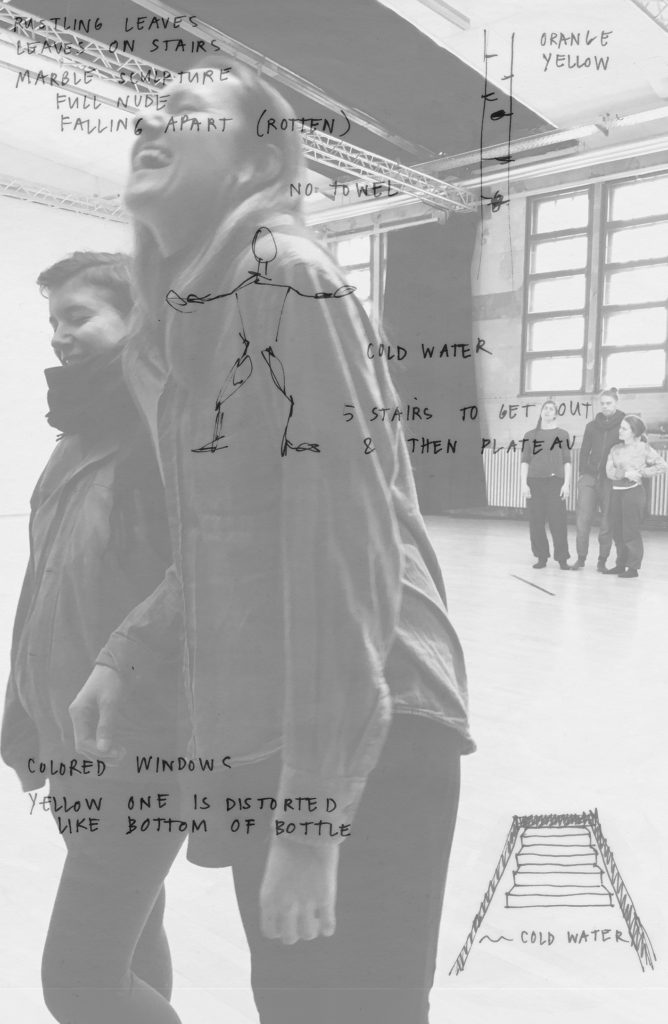
The collages by Peter Stamer are based on drawings and photos by Ilya Noe and contributions by the workshop participants: Hanna Anderson Asman, Nicolas Bahr, Meggie Blankschyn, Alexander Blum Bertelsen, Johanna Faber, Margarida Farinha, Zoe Goldstein, Chloé Hennemann, Karolina Kisiel, Bartek Mikula, Clara Birnbaum Pantzerhielm, Joana Marcus, Lisa Magierski, Maria Nevado, Myriam Schmidt, Dan Su, Isabelle Vesseron – with a great thank you! (And a great thank you to Ilya Noe for proof-reading of the text.)
